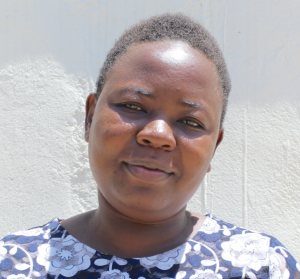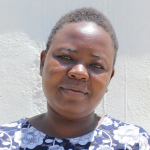Most of the people living in Emmachembe Community are small scale farmers who grow crops like sugarcane, maize, sweet potatoes, and beans. There are also a lot of trees surrounding this area. Most of the time you will find people busy on their farms. That is because they make a living selling what they harvest. That money helps pay for their children’s education and meet other daily needs.
Most parents are awake by 5:30 am to prepare their children to go to school. After the children have gone, they start their domestic chores. Parents prepare lunch for their kids, who come back home for a break at 12:45 pm. After eating, the children immediately go back to school to proceed with afternoon lessons until 3:45 pm.
Pupils engage in games until 4:45 pm and then go back home to assist parents in attending to other daily chores before the day ends. Their parents will instruct them who is to prepare dinner, who to draw water from the spring, and who to clean the compound. Once these chores are complete the children will begin their studies.
For more than 175 people, Magina Spring is their main source of water. This is because it is strategically positioned to serve all community members in this area.
A discharge pipe was inserted directly into the soil years ago to help the water flow out and make it easier for people to collect water at the spring. It is dangerous to drink water from such a source since is easy to contact diseases because the place is not protected.
When safe water is scarce such as during the dry season, this water source becomes overcrowded since the demand for water may be high and could even lead to conflicts among those fetching water who may be in a hurry. Another consequence is that community members may be tempted to use water from any other source that may have been contaminated thus leading to illness that may force the family to dig deep into their pockets to care for hospital bills using money that was intended for other family needs such as food, clothing, and school fees.
"Our kids often suffer from diarrhea and complain of stomachaches since they drink [this] water. It forces us to take them to a healthcare facility for treatment which is often expensive," said Ritah Musotsi, a farmer who uses the spring to meet her family's water needs.
Protecting this spring will really benefit members of this entire community, reported our teams after their visit. It will help ensure that people access safe and clean drinking water that will promote a healthy community. It will curb the spread of illnesses that are a result of contaminated water.
What we can do:
Spring Protection
Protecting the spring will help provide access to cleaner and safer water. Construction will keep surface runoff and other contaminants out of the water. With the community’s high involvement in the process, there should be a good sense of responsibility and ownership for the new clean water source.
Fetching water is predominantly a task carried out by both women and young girls. Protecting the spring and offering training and support will, therefore, help empower the female members of the community by freeing up more of their time and energy to engage and invest in income-generating activities.
Training
Community members will attend hygiene and sanitation training for at least 2 days. This training will ensure participants have the knowledge they need about healthy practices and their importance.
The facilitator plans to use Participatory Hygiene and Sanitation Transformation (PHAST), Community-Led Total Sanitation (CLTS), Asset-Based Community Development (ABCD), group discussions, handouts, and demonstrations at the spring. One of the most important topics we plan to cover is the handling, storage, and treatment of water. Having a clean water source will be extremely helpful, but it is useless if water gets contaminated by the time it is consumed. We will also emphasize the importance of handwashing.
Training will result in the formation of a committee that will oversee the operations and maintenance of the spring. They will enforce proper behavior around the spring and delegate tasks that will help preserve the site, such as building a fence and digging proper drainage channels. The fence will keep out destructive animals, and the drainage will keep the area’s mosquito population at a minimum.
Sanitation Platforms
On the final day of training, participants will select 5 families that should benefit from new concrete latrine floors. Training will inform the community and selected families on what they need to contribute to make this project a success. They must mobilize locally available materials, including bricks, clean sand, and gravel. The 5 families chosen for sanitation platforms must prepare by sinking a pit for the sanitation platforms to be placed over. All community members must work together to make sure that accommodations and food are always provided for the work teams.

 Protected Spring
Protected Spring
 Rehabilitation Project
Rehabilitation Project






































